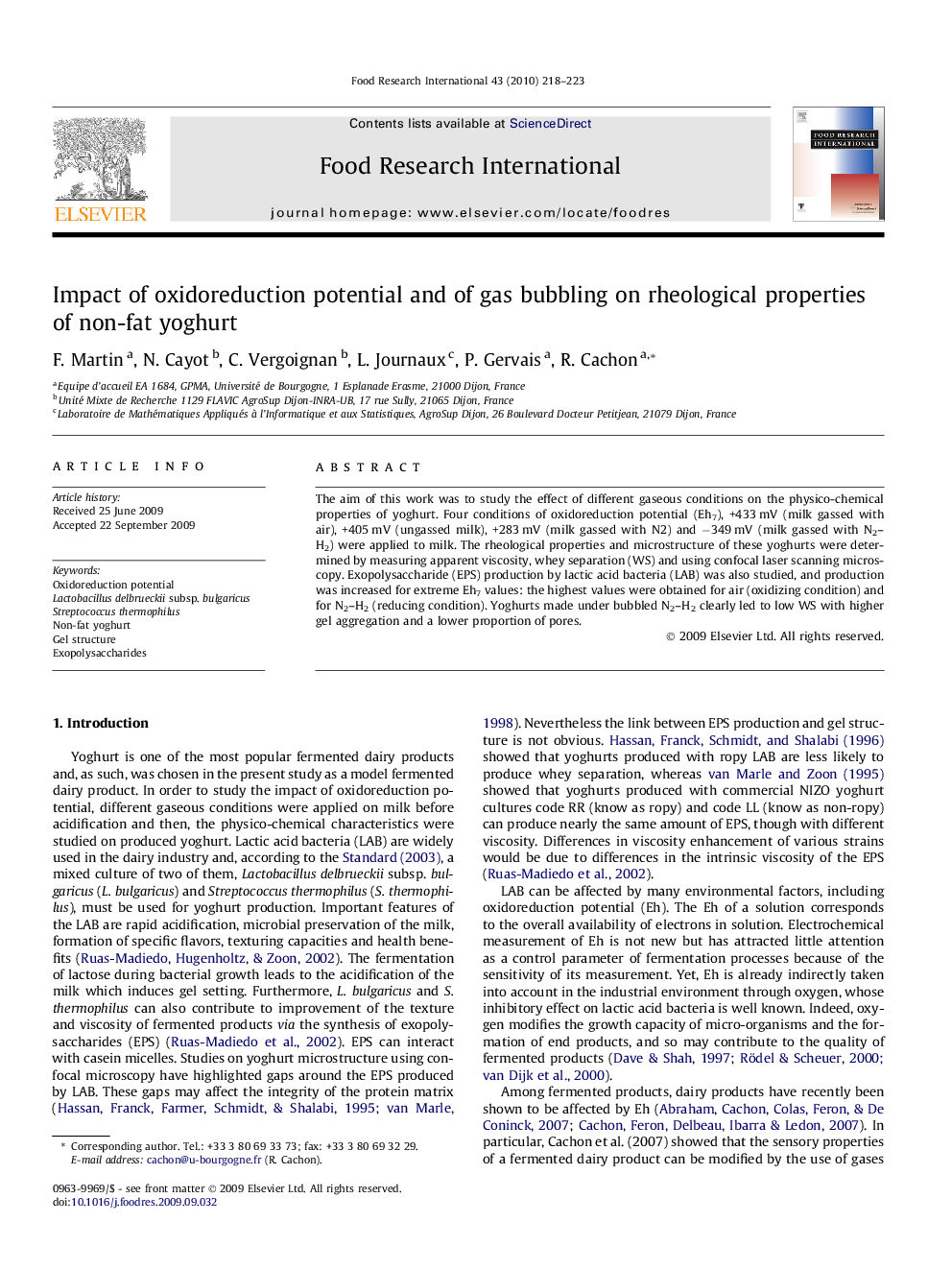| Article ID | Journal | Published Year | Pages | File Type |
|---|---|---|---|---|
| 4562281 | Food Research International | 2010 | 6 Pages |
The aim of this work was to study the effect of different gaseous conditions on the physico-chemical properties of yoghurt. Four conditions of oxidoreduction potential (Eh7), +433 mV (milk gassed with air), +405 mV (ungassed milk), +283 mV (milk gassed with N2) and −349 mV (milk gassed with N2–H2) were applied to milk. The rheological properties and microstructure of these yoghurts were determined by measuring apparent viscosity, whey separation (WS) and using confocal laser scanning microscopy. Exopolysaccharide (EPS) production by lactic acid bacteria (LAB) was also studied, and production was increased for extreme Eh7 values: the highest values were obtained for air (oxidizing condition) and for N2–H2 (reducing condition). Yoghurts made under bubbled N2–H2 clearly led to low WS with higher gel aggregation and a lower proportion of pores.
